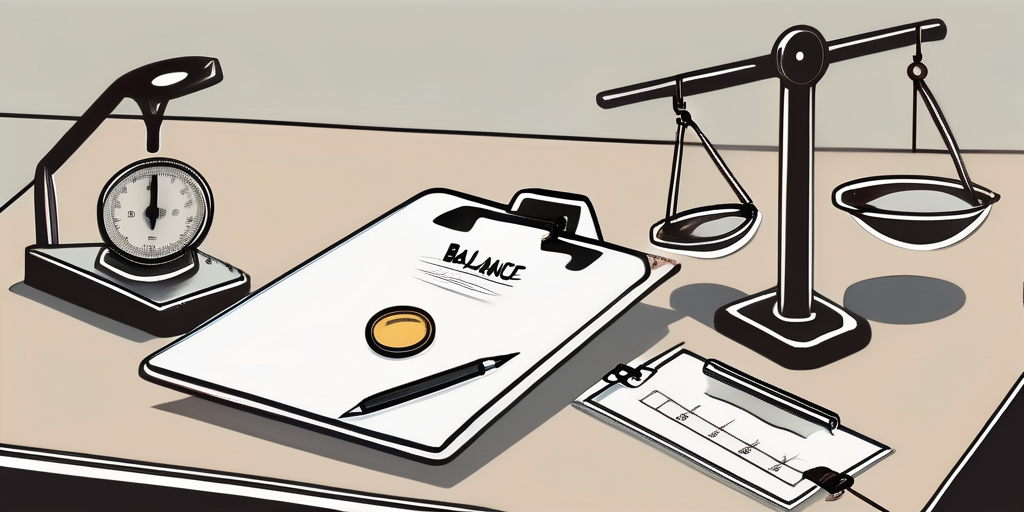Risk assessments play a crucial role in ensuring the safety and wellbeing of employees and visitors in any business environment. By identifying potential hazards, evaluating risks, and implementing necessary precautions, organizations can proactively mitigate potential dangers and minimize the likelihood of accidents or injuries.
Key elements of a risk assessment
A comprehensive risk assessment comprises several crucial elements that need to be addressed in order to protect the health and safety of individuals within a business setting.
When conducting a risk assessment, it is important to delve deeper into the various aspects that contribute to a thorough evaluation. By exploring these elements in detail, employers can ensure the effectiveness of their risk management strategies.
Identifying potential hazards
The first step in conducting a risk assessment is to identify potential hazards present in the workplace. This involves a thorough examination of the physical environment, equipment, substances, and work processes. By meticulously scrutinizing every nook and cranny, employers can uncover hidden dangers that may pose a threat to the well-being of their employees.
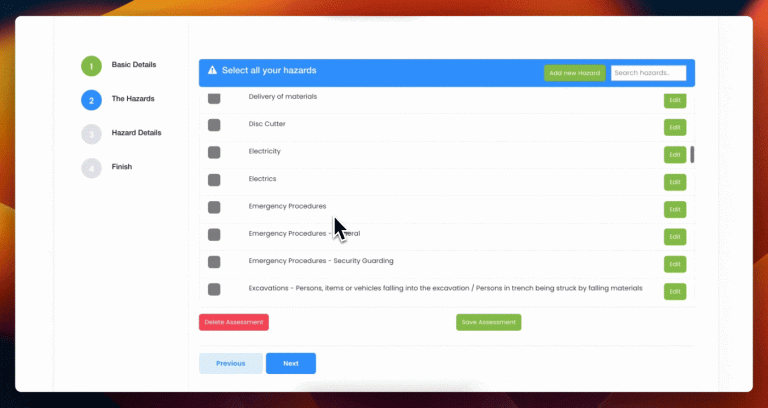
Evalu-8 EHS Makes It Easy To Select Your Hazards
For instance, in a manufacturing facility, potential hazards may include machinery with exposed moving parts, hazardous chemicals, or poorly maintained walkways. By identifying these hazards, employers can determine which areas pose the greatest risk and prioritize control measures accordingly.
Determining who might be harmed and how
Once hazards are identified, it is important to assess who may be at risk and how. This includes understanding the potential consequences of exposure to the hazards and the vulnerability of different groups, such as employees with specific health conditions or visitors with limited mobility.
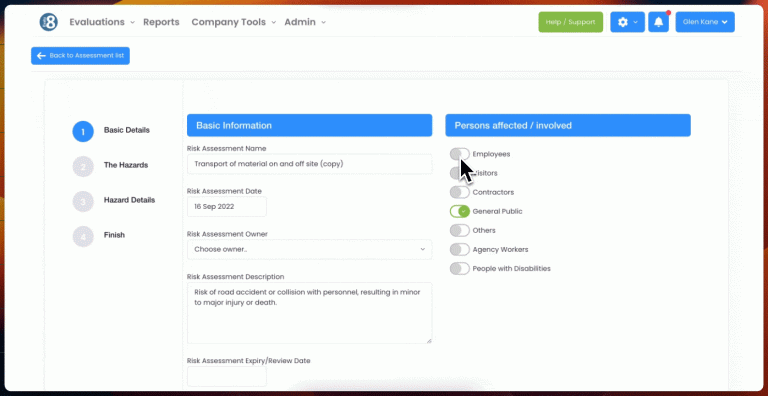
With Evalu-8 EHS you can quickly select who is at risk
By considering these factors, employers can tailor appropriate control measures to protect all individuals. For example, if there is a risk of exposure to harmful substances, employers may provide specialized training and personal protective equipment to employees who are more susceptible to the effects of these substances.
Evaluating risks and deciding on precautions
After identifying hazards and assessing who might be harmed, the next step is to evaluate the level of risk associated with each hazard. This involves considering the likelihood and severity of potential harm.
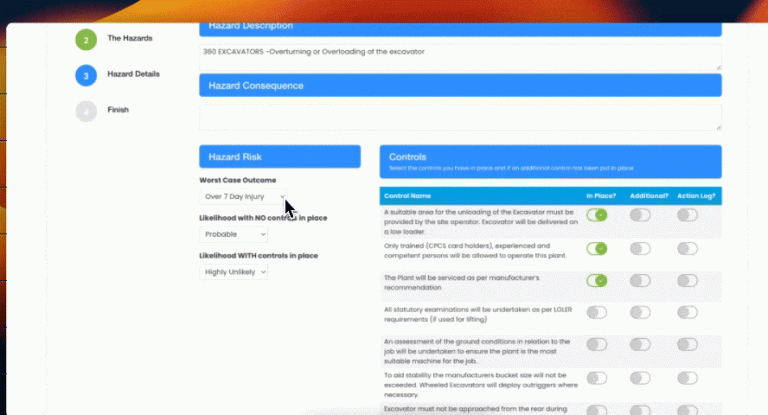
Quickly select risk level with Evalu-8 EHS
By evaluating risks, employers can determine which control measures are necessary and decide on the most appropriate precautions to implement. These precautions may include physical barriers, personal protective equipment, training programs, or changes to work procedures.
For instance, if there is a risk of falling from heights, employers may install guardrails or provide employees with safety harnesses. Additionally, regular safety training sessions can be conducted to ensure that employees are aware of the potential risks and the necessary precautions to mitigate them.
By following these key elements of a risk assessment, employers can create a safer and healthier work environment for their employees. It is essential to regularly review and update risk assessments to adapt to any changes in the workplace and to ensure ongoing protection for all individuals.
Steps to write an effective risk assessment
Preparation for writing a risk assessment
Before writing a risk assessment, it is essential to gather all the necessary information. This includes identifying all relevant hazards, reviewing previous risk assessments, consulting with employees and supervisors, and considering any legal requirements specific to the industry. Proper preparation ensures that the risk assessment process is comprehensive and accurate.
Writing the risk assessment
When writing a risk assessment, it is important to use clear and concise language, making it easily understandable for all stakeholders. The assessment should include a description of the hazards, an evaluation of the associated risks, and a detailed explanation of the control measures that will be implemented. It is also crucial to outline responsibilities and timelines for implementing the control measures.
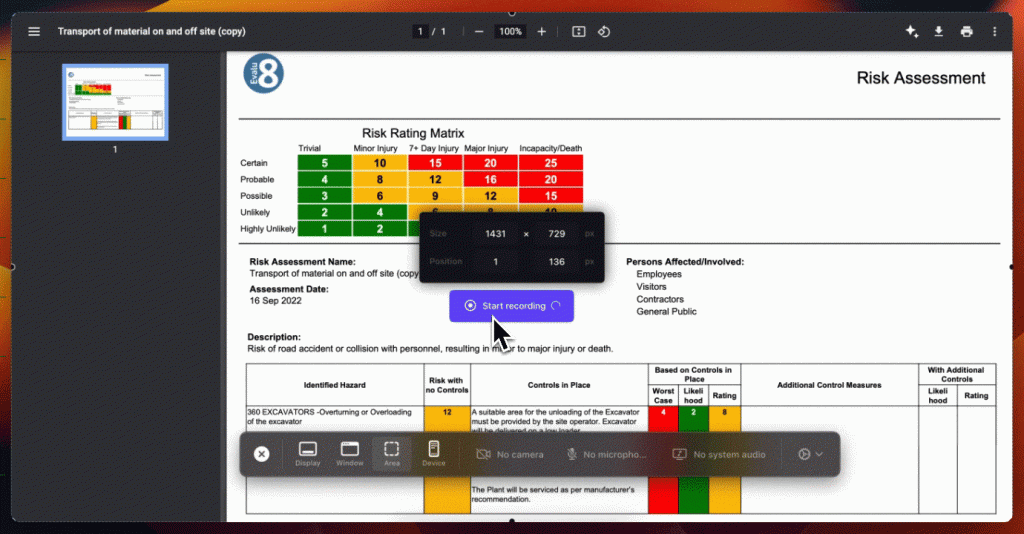
Risk Assessments in Evalu-8 EHS are automatically generated – No need to spend hours writing it.
Reviewing and updating the risk assessment
A risk assessment is not a one-time task. It should be regularly reviewed and updated to account for any changes in the workplace or industry regulations. Regular reviews ensure that the control measures in place remain effective and responsive to evolving risks. Employers should involve employees in the review process to gain valuable insights and ensure that they have a comprehensive understanding of the risks and control measures.
Furthermore, during the preparation phase, it is important to conduct thorough research on the specific hazards associated with the industry. This may involve studying industry reports, consulting with experts, and analyzing historical data. By gathering as much information as possible, the risk assessment can be more accurate and comprehensive, allowing for better decision-making when it comes to implementing control measures.
In addition to consulting with employees and supervisors, it can also be beneficial to involve external stakeholders in the risk assessment process. This could include representatives from regulatory bodies, industry associations, or even neighboring businesses. By seeking input from a wide range of perspectives, the risk assessment can benefit from diverse expertise and ensure that all potential risks are considered.
Common mistakes to avoid when writing a risk assessment
Overlooking less obvious risks
One common mistake is focusing only on the most apparent risks while overlooking less obvious hazards. It is essential to consider all potential dangers, including those that may arise from non-routine activities or changes in work procedures. By being thorough in the assessment, employers can ensure the safety of their workforce in all scenarios.
Neglecting to involve all stakeholders
An effective risk assessment involves the collaboration of all stakeholders, including employees, supervisors, and health and safety representatives. Neglecting to involve these individuals can result in oversight and gaps in the assessment process. Engaging everyone ensures a more comprehensive understanding of risks and helps gather diverse perspectives.
Failing to review and update the assessment regularly
A static risk assessment becomes outdated over time, as workplace conditions and regulations evolve. Failure to review and update the assessment can lead to ineffective control measures and increased risks. It is important to schedule regular reviews and updates to ensure that the assessment remains relevant and responsive to changing circumstances.
While these three mistakes are crucial to avoid, it is worth exploring some additional aspects that can enhance the effectiveness of a risk assessment.
Firstly, it is important to consider the potential impact of external factors on the identified risks. For example, changes in weather conditions or the introduction of new technologies can significantly alter the level of risk associated with certain activities. By incorporating these external factors into the assessment, organizations can better anticipate and mitigate potential hazards.
Secondly, it is beneficial to involve external experts or consultants in the risk assessment process. These professionals bring a fresh perspective and specialized knowledge that can uncover risks that may have been overlooked internally. Their input can provide valuable insights and help organizations develop more robust risk management strategies.
Understanding the importance of risk assessments
In the context of business operations, risk assessments serve as a fundamental tool in managing health and safety. They help employers identify hazards, evaluate associated risks, and implement control measures to protect their workforce and visitors. Risk assessments are not only essential for compliance with legal obligations but also for creating a safe and secure working environment.
The role of risk assessments in business
Risk assessments are a key component of an effective health and safety management system. They provide organizations with a systematic approach to identifying and assessing potential hazards, ensuring that all required control measures are in place to protect employees, customers, suppliers, and the general public. By conducting regular risk assessments, businesses can stay on top of emerging risks and adapt their control measures accordingly.
Legal obligations and risk assessments
Under UK legislation, employers have a legal duty to conduct risk assessments to identify and mitigate potential hazards in the workplace. The Health and Safety at Work Act requires employers to ensure the health, safety, and welfare of their employees, as well as anyone affected by their activities. Failing to carry out risk assessments or neglecting to implement appropriate control measures can result in legal consequences and reputational damage to the organization.
Moreover, risk assessments play a crucial role in preventing accidents and injuries. By systematically assessing the risks associated with different tasks and activities, employers can implement measures to reduce the likelihood of incidents occurring. This not only protects the well-being of employees but also helps to maintain productivity levels within the organization.
Furthermore, risk assessments are not limited to physical hazards. They also encompass psychological and emotional risks that may arise in the workplace. For example, stress-related issues, such as excessive workload or poor management practices, can have a detrimental impact on employees’ mental health. By conducting risk assessments, employers can identify and address these non-physical risks, promoting a positive and supportive work environment.

